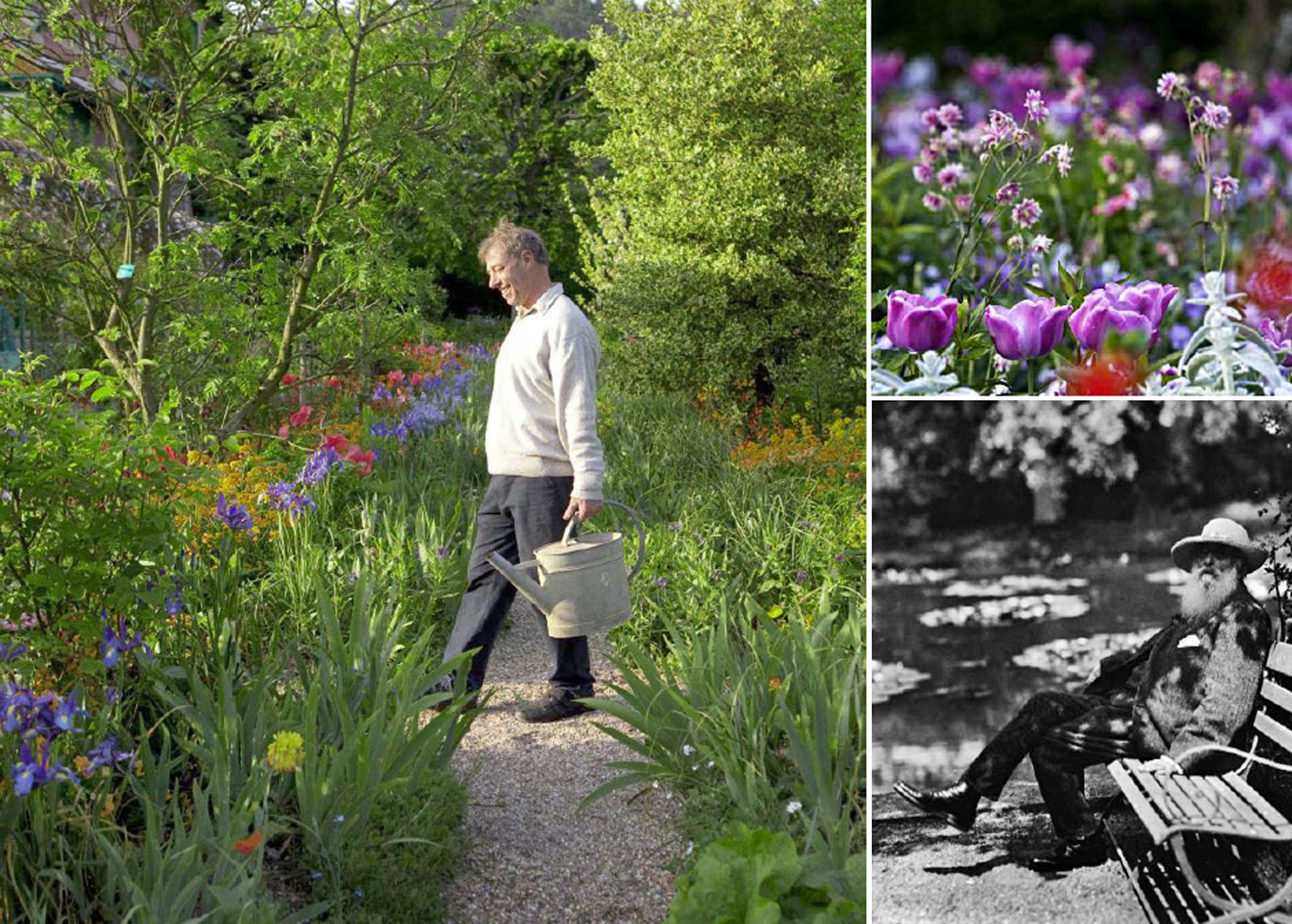An English horticulturalist is restoring Claude Monet's garden at Giverny
And James Priest is using the French Impressionist's work as his inspiration

Restoring a tarnished masterpiece is a tricky business. Art lovers are attached to what they know. So are gardeners and garden lovers.
Over the past three years, a British gardener has begun to restore one of most hallowed pieces of ground in France: Claude Monet's garden at Giverny, 50 miles west of Paris.
The Monet garden is a living painting in itself, described by the Impressionist artist as "my most beautiful masterpiece". When James Priest was appointed head gardener at Giverny in 2011, he found a beautiful but time-worn "canvas", disfigured by some of the efforts of previous custodians.
He set out – sometimes against the wishes of his fellow gardeners – to return Monet's masterpiece to its original glory. To do so, Mr Priest, 55, surrounded himself with prints of Monet's paintings and even learnt how to paint himself.
His changes – he prefers "restorations" – have come into full bloom for the first time this spring. The celebrated water-lily ponds have been left largely untouched. The main part of the garden, previously a riot of sometimes jarring colour, has been transformed into what Mr Priest describes as "something more harmonious, a symphony of colour, not a cacophony".
The results are stunning. "Visitors sometimes say that they feel that they have been standing inside a Monet painting. I couldn't ask for a better compliment than that," Mr Priest told The Independent on Sunday.
Claude Monet lived at Giverny from 1883 to his death in 1926. No precise information is available on what the five acres of flowerbeds and water-lily ponds looked like in his time. There are letters and diaries, and black and white photographs. Mr Priest says his best guide has been Monet's paintings themselves. They cannot be copied slavishly, because they don't show the whole garden. The artist's failing eyesight meant that he often painted the light and colour of Giverny, rather than the detail.
Nonetheless, Mr Priest believes the paintings give a clear picture of the style and objectives of Monet-the-gardener. "Many of his best- known works were painted in, and inspired by, this garden. I have tried to reverse the process. I have used the spirit of his paintings to guide the restoration to something closer to what I believe he intended."
In making the changes, Mr Priest says he has had the wholehearted support of Hugues Gall, director of the Claude Monet Foundation, which owns and operates the painter's house and garden at Giverny. He had – at first – stubborn opposition from some of the other gardeners at the site. "I don't think that it was because I was British. It was because I was new," said Mr Priest. "They had been used to doing the same things year after year, because that was what they had always done."
He added: "Some things were fine. The water-lily ponds needed hardly any change. Elsewhere, I saw things that seemed just not right to me, mechanical blocks of colour, jarring red roses in beds that were supposed to be full of cool blues and purples."
One of Mr Priest's most spectacular restorations, flowering for the first time, are Monet's 38 "paint boxes" or small rectangular beds of blooms with graded colours like an artist's palette. The site's gardeners called them the "tombs" as they thought they looked like mass graves.
"This is, after all, a painter's garden," Mr Priest said. "By trying to do some painting myself, I began to understand that painters see colours differently from gardeners. We have a tendency to think that there are warm colours, like red, and cool colours, like blue. Artists think in terms of 'warm blues' and 'cold blues', 'warm reds' and 'cold reds'."
Mr Priest, who trained at the Royal Botanic Gardens in Kew, has worked in France for 29 years, looking after the grounds of a succession of large estates, including 17 years working for Baron Elie de Rothschild at Royaumont, near Chantilly.
At Giverny, he is the third head gardener in succession to Monet himself. After the artist's death, the house and garden fell into disrepair, both having been damaged by allied bombing in 1944.
With the help of American donations, the site was restored in 1977-80 by its curator Gérald Van der Kemp and head gardener Gilbert Vahé. They consulted friends' memories, the records of local plant nurseries and Monet's letters, photos and paintings to recreate his garden.
The property was reopened to the public in September 1980 and now attracts 500,000 people a year.
"I would like to think," said Mr Priest, "That Claude Monet could come into this garden today, set up his easel and start painting."
Claude Monet's house and garden at Giverny are open daily from 1 April until 1 November (9.30am to 6pm)
Join our commenting forum
Join thought-provoking conversations, follow other Independent readers and see their replies
Comments